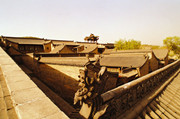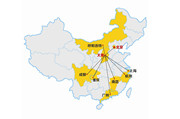Shanxi speeding up work on its green industry
By Zhou Yuanyuan ( chinadaily.com.cn )
Updated: 2013-03-06
Shanxi province’s 12th Five-year Plan for developing a circular economy calls for a recycling rate for its traditional industries to reach 90 percent by 2015, so the recycling economy is becoming the basis of low-carbon industrial development, and for improving its ecology and environment and a newer, more beautiful Shanxi.
With its natural resources, the province has been able to develop a heavy industrial structure that occupies more than 95 percent of its total industrial output, including a coal industry whose added-value output accounts for more than 40 percent of its industrial economy. This structure has had its negative aspects when it comes to the ecology and environment. But it’s traditional industries have a brilliant future in the circular economy, said Wu Pengcheng, of the provincial statistics bureau, because the traditional industries have various by-products with possible value and good relevance.
Wu explained that Shanxi’s coal industry, its first pillar industry, only has a current circulation rate of 53 percent, so it has great potential in that area.
The official Shanxi recycling economy regulations came into effect in October 2012 and, through some measurements and calculation, Wu discovered that the traditional industry’s circulation rate recently stood at about 60 percent, or about 30 percent below the 2015 target. From the perspective of other industries, the circulation rate of the coking and power stand at more than 80 percent; while coal and chemicals are lower, at only about 50 percent.
Wu suggests that they come up with plans to deal with the comprehensive utilization of solid industrial waste, with a management system that is straightened out so that it can deal with the right use of coal and associated resources. There also needs to be an integration of coal and gas recovery and a circular economy that integrates the appraisal government at all levels.
Edited by Roger Bradshaw




